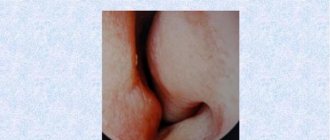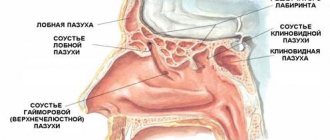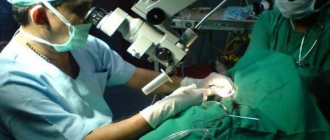Nasal liquorrhea is the leakage of cerebrospinal fluid from the nasal cavity caused by damage to the skull.
Liquor is cerebrospinal fluid that is extremely important for the normal functioning of the brain. It looks like a clear, watery liquid. The danger is that many people may think that water or normal mucous discharge is coming from the nose and not give this situation any serious significance. Often it can be diluted with blood, which is quite natural, taking into account the traumatic component of this process.
In its normal state, cerebrospinal fluid is located between the brain and the bone tissue of the skull. In addition, cerebrospinal fluid is located in the cavities of the brain. However, if the integrity of the skull is violated, all conditions are created for the development of nasal liquorrhea.
The nasal cavity is separated from the intracranial cavity by the paranasal sinuses. When cerebrospinal fluid flows out, it initially fills one of the paranasal sinuses. Usually sphenoid, frontal or ethmoidal labyrinth. After which, from the corresponding paranasal sinus it flows directly into the nasal cavity. Then there are two options. The fluid may pour out through the nostrils or penetrate through the nasopharynx into the esophagus.
Most often, cerebrospinal fluid leaks from only one nostril. Its release is especially active when the head is tilted. Also, the pathological condition in question can be confused with rhinorrhea.
Nasal liquorrhea can occur immediately after a person receives a traumatic brain injury, or it can appear only after some, sometimes quite long, time.
In addition to the nasal form, liquorrhea can also have an ear form. In this case, clear liquid comes out through the ear.
In addition, cerebrospinal fluid fills the space between the spinal cord and the bone tissue of the spinal column. In case of back injuries, it can be released at the site of its localization.
Causes
In the vast majority of cases, the cause of nasal liquorrhea is traumatic brain injury. In addition, it can be called:
- spinal injuries due to back injuries;
- surgery to remove nasal polyps;
- congenital anatomical defects of the skull;
- surgery to remove a foreign object from the nose;
- the presence of herniations of the spinal cord or brain;
- damage to the bone structures of the ethmoid labyrinth;
- poorly performed neurosurgical surgery.
In addition, liquorrhea can be spontaneous. That is, it arises in a situation where none of the above reasons simply exist.
Brain fluid leaks from nose
Nasal liquorrhea is the leakage of cerebrospinal fluid (CSF) through the nose. Liquor is a liquid produced by special structures of the brain to nourish it.
The main symptom of the disease is the leakage of clear, colorless liquid from one, or less often two, halves of the nose. Sometimes it can be stained with blood.
Liquororrhea is the uncontrolled leakage of cerebrospinal fluid (CSF, cerebrospinal fluid).
Cerebrospinal fluid provides stable intracranial pressure, serves as protection against mechanical stress, supports water and electrolyte regulation, and serves to ensure the metabolic process between the brain and blood.
Cerebrospinal fluid is produced in the brain. The usual location of cerebrospinal fluid is the area between the bones of the spine and the spinal cord, the central canal of the spinal cord, the ventricles of the brain, the area between the bones of the skull and the meninges, the sulci of the brain, and the subarachnoid space.
The leakage of cerebrospinal fluid occurs as a result of a violation of the integrity of the dura mater, as a consequence of injuries to the spine, skull, and after surgical interventions.
Liquor is a transparent, oily biological fluid that ensures the functioning of the central nervous system and continuously circulates in the subarachnoid space of the spinal cord and brain, the cerebrospinal fluid tract, and the ventricles of the brain.
The main factor influencing the development of liquorrhea is injuries or defects of the dura mater. Damage occurs due to:
- traumatic brain injuries in which the bones of the base of the skull are damaged (pyramid of the temporal bone, bottom of the anterior cranial fossa);
- traumatic brain injuries in which the bones of the cranial vault (frontal sinus) are damaged
- neurosurgical intervention in the spine, spinal cord or brain (cerebrospinal fluid leaks through postoperative sutures)
- growth of pathological neoplasms located in the brain area;
- congenital anomalies of the central nervous system (hernia in the spinal cord or brain);
- congenital or acquired anatomical defects of the skull (defect in the sphenoid sinus, ethmoid bone, cribriform plates, posterior wall of the frontal sinus, pyramid of the temporal bone, posterior and middle cranial fossa, roof of the tympanic cavity);
- injuries of the ethmoid bone sinuses as a result of ENT manipulations (drainage, lavage, removal of foreign objects, removal of polyps);
- connective tissue diseases (Marfan syndrome), which cause significant thinning of the dura mater of the brain and joint hypermobility;
- pathological processes in the brain and bones of the skull (disembryogenetic, tumor, inflammatory origin).
Ear liquorrhea in children is caused by a congenital malformation of the labyrinth, which favors the appearance of deafness and meningitis. In adults, it is caused by bulging of the arachnoid mater due to a defect (congenital) in the upper wall of the tympanic cavity or a defect (acquired due to dynamic factors) of the arachnoid mater.
- The leakage of cerebrospinal fluid occurs as a result of a violation of the integrity of the dura mater, as a consequence of injuries to the spine, skull, and after surgical interventions.
- Liquor is a transparent, oily biological fluid that ensures the functioning of the central nervous system and continuously circulates in the subarachnoid space of the spinal cord and brain, the cerebrospinal fluid tract, and the ventricles of the brain.
- The main factor influencing the development of liquorrhea is injuries or defects of the dura mater. Damage occurs due to:
Symptoms
The main sign indicating the development of nasal liquorrhea is the flow of clear oily liquid from the nasal cavity.
Patients often experience a dull headache. This is explained by a decrease in intracranial cerebrospinal fluid pressure.
When cerebrospinal fluid enters the respiratory tract, a cough occurs. As a rule, this situation occurs at night, when the person is sleeping and, therefore, his body is in a horizontal lying position.
Symptoms and diagnostic methods
Nasal liquorrhea has both external and internal manifestations. First of all, the release of clear liquid from the nasal passage attracts attention. But this sign can easily be confused with the initial signs of a cold or allergy. But in the case of liquorrhea, the discharge is constant and can temporarily stop only after changing the position of the body.
The fluid leaks from the side of the nose where a crack or other damage has formed. The appearance of nasal discharge is accompanied by a headache. This symptom is caused by a decrease in the volume of cerebrospinal fluid around the brain and a drop in blood pressure. Some patients experience coughing and suffocation when lying down. This is caused by cerebrospinal fluid leaking into the airways.
If the damage to the dura mater of the brain and skull was caused by a car accident that resulted in a severe blow to the head, the cerebrospinal fluid will contain blood. To determine that the fluid flowing from the nose is cerebrospinal fluid, and that damage to the integrity of the skull and dura mater has occurred, the doctor must analyze the patient’s complaints and his medical history.
It is important to find out when signs of cerebrospinal fluid leakage were first noticed, and under what circumstances a traumatic brain injury could occur, and whether surgical manipulations were performed on the head. The skull and spine are examined for defects, where the cerebrospinal fluid is leaking is determined, and signs of a fracture of the base of the skull are identified.
This can be recognized by bleeding around the eyes and on the back of the head. An analysis of the discharge is prescribed, which will allow us to understand whether it is cerebrospinal fluid. In this regard, glucose is an important indicator. There is a lot of it in the liquor, but little in the nasal mucus. In addition, an endoscopic examination of the nasal cavity is prescribed.
For diagnostic purposes, a so-called handkerchief test is performed. If cerebrospinal fluid leaks, then after wiping your nose with a handkerchief, oily stains will remain on the tissue.
After drying, it will remain soft, and classic nasal discharge dries out after contact with the fabric, acquiring a crusty structure.
If diagnostic difficulties arise, a computed tomography scan of the paranasal sinuses and head is prescribed. Using this method, the layer-by-layer structure of the skull bones is studied and possible damage is identified. To make a final diagnosis, consultation with an otolaryngologist and neurosurgeon is required.
Diagnostics
It is not difficult to detect liquorrhea. This is achieved through a medical examination and medical history.
A sample of the oozing clear fluid is also taken. In laboratory conditions, it is analyzed for glucose content.
There is also a method for self-diagnosis of nasal liquorrhea. Blot the leaking liquid with a handkerchief. The liquor leaves oil stains on the handkerchief. If it is simple watery snot, then nothing of the kind will be noted.
To detect the specific location of bone tissue damage, magnetic resonance or computed tomography techniques are used.
Nasal liquorrhea
Nasal liquorrhea is the leakage of cerebrospinal fluid (CSF) from the nasal cavity due to damage to the bones of the base of the skull and dura mater when the tightness of the subarachnoid space is broken.
The subarachnoid space is a cavity between the pia and arachnoid meninges of the brain and spinal cord, filled with cerebrospinal fluid (CSF), which provides nutrition and metabolism in the brain. It appears to be a clear, watery liquid. The danger is that many people may think that water or normal mucous discharge is coming from the nose and not give this situation any serious significance. Often, the cerebrospinal fluid can be diluted with blood, which is quite natural, taking into account the traumatic component of this process. The nasal cavity is separated from the intracranial cavity by the paranasal sinuses. When cerebrospinal fluid flows out, it initially fills one of the paranasal sinuses. Usually the sphenoid, frontal or ethmoidal labyrinth, after which it flows from the corresponding paranasal sinus directly into the nasal cavity. Then there are two options. The fluid may pour out through the nostrils or penetrate through the nasopharynx into the esophagus.
Classification of liquors:
1. By source of origin:
2. Due to the occurrence:
• caused by mechanical damage.
Spontaneous nasal liquorrhea is a rare disease caused by a congenital disorder of the integrity of the cribriform plate and the adjacent dura mater. Spontaneous nasal liquorrhea occurs periodically for no apparent reason and may stop for a while. It can occur after physical exertion, in some diseases of the brain, accompanied by venous stagnation and increased intracranial pressure.
The most common cause of nasal liquorrhea is a violation of the integrity of the dura mater in combination with a fracture or damage to the bones of the skull/spine.
May develop in the following situations:
• traumatic brain injury (penetrating, especially fracture of the base of the skull in car accidents, gunshot wounds);
• incompetent sutures of the dura mater after neurosurgical operations;
• damage to the bones of the ethmoid sinus (located deep in the nose) during ENT manipulations (washing, drainage);
• herniations of the spinal cord and brain.
3. Based on the time of occurrence of liquorrhea, two forms are distinguished:
• primary liquorrhea - occurs immediately after injury or surgery;
• secondary liquorrhea - occurs over a period of time as a result of the formation of a fistula (a passage between the space around the brain and the skin).
4. By constancy of expiration:
• periodic (occurs only when the body position changes).
5. Based on the amount of fluid leaking out, it can be divided into:
Symptoms:
• discharge of a light, clear fluid from the nose (mainly from one nostril), but in some cases it may be streaked with blood or pale pink in color;
• night cough due to drainage of cerebrospinal fluid into the trachea and bronchi;
• severe headaches due to decreased cerebrospinal fluid pressure in the cranial cavity.
Diagnosis of profuse nasal liquorrhea is quite simple. After tilting the patient's head down, a clear, light liquid begins to be released from the nostril in frequent drops, which can be collected in sufficient volume for any tests. On the other hand, hidden, recurrent nasal liquorrhea is sometimes quite difficult to diagnose and requires the use of the entire arsenal of laboratory, radiological and radiological techniques. A patient with nasal liquorrhea usually has a history of traumatic brain injury, surgery of the nose and paranasal sinuses, including endoscopic interventions in the nasal cavity. Depending on this, it is already possible to guess the location of the cerebrospinal fluid fistula. Diagnosis of nasal liquorrhea consists of collecting fluid flowing from the nostril and laboratory analysis of it for glucose content. In case of a positive result, radiography, computed tomography (CT) of the sinuses and skull, or magnetic resonance imaging (cisternography) to identify a cerebrospinal fluid fistula, as well as radionuclide cisternography, are prescribed.
Handkerchief test (oil stain): wipe off the leaking liquid with a handkerchief. Liquor, unlike nasal mucus, leaves oily stains on the fabric of the handkerchief, and when the handkerchief with liquor dries, it remains soft (while nasal mucus dries out and “hardens”).
Treatment of liquorrhea
Conservative methods (carried out first):
• avoid straining the abdomen and blowing your nose;
• elevated position of the head (preventing the leakage of cerebrospinal fluid);
• diuretics (to reduce intracranial pressure, which will reduce the leakage of cerebrospinal fluid);
• lumbar drains: release of cerebrospinal fluid from the cavities of the brain to reduce cerebrospinal fluid pressure in the skull;
• antibiotic therapy (prevention and treatment of infection);
• anti-inflammatory therapy (non-steroidal anti-inflammatory drugs).
Surgical treatment of liquorrhea consists of eliminating the cerebrospinal fluid fistula and restoring the tightness of the cranial cavity using adhesive compositions.
Surgery can be performed by trephination of the frontal region (transcranial surgery), bypass surgery, or endoscopically through the nasal cavity.
Endoscopic treatment of nasal liquorrhea is characterized by the least invasiveness, which ensures minimal trauma.
The surgery is performed in a hospital setting, which requires hospitalization for 10-14 days.
Complications of untreated nasal liquorrhea:
• meningitis, meningoencephalitis, myelitis, ventriculitis (occur when the inflammatory process moves from the nasal cavity to the cranial cavity);
• pneumocephalus (air gets inside the skull);
• bronchitis and pneumonia;
• gastritis (when a large amount of liquid enters the stomach).
Prevention of liquorrhea:
• thorough examination of the head wound and timely surgical treatment for traumatic brain injuries;
• careful suturing of the dural defect after neurosurgical operations.
Take care of your health and get treatment on time!
Treatment
There are conservative and surgical methods for treating this pathological condition.
It should also be remembered that a patient suffering from liquorrhea needs complete rest. Bed rest is advisable. You should lie on high pillows. This will ensure an elevated position of the head and prevent the leakage of cerebrospinal fluid. You should not strain, blow your nose or sneeze.
Conservative therapy
For nasal liquorrhea, it includes the following measures:
- the use of antibiotics and anti-inflammatory drugs to prevent the occurrence of infectious complications;
- taking diuretic medications;
- carrying out lumbar drainages.
Clinical manifestations and symptoms of spontaneous liquorrhea
Spontaneous liquorrhea is characterized by headaches when changing body position (orthostatic headaches). This may be due to decreased intracranial pressure (intracranial hypotension). Cases have been described in which headaches in patients with spontaneous liquorrhea appear with minimal exertion, and not with changes in body position. Such headaches are anti-orthostatic in nature, which can be explained by an increase in intracranial pressure in the patient.
In the case of prolonged and profuse liquorrhea, the patient may experience signs of general weakening (asthenization) and dehydration (dehydration) in the form of dry skin and visible mucous membranes, as well as weight loss. With hidden and mild liquorrhea, the patient may have no complaints.
With obvious nasal liquorrhea, patients may experience a night cough as a result of cerebrospinal fluid (CSF) entering the trachea and bronchi when the patient lies on his back for a long time. This may lead to the subsequent development of bronchitis.
Nasal spontaneous liquorrhea manifests itself in the form of watery discharge from the nose.
An important symptom of nasal spontaneous liquorrhea in patients is a violation of the sense of smell in the form of its decrease or reduction (anosmia, hyposmia). Smell impairment occurs more often on one side. Visual impairment indicates damage to the anterior parts of the skull base.
Otorrhea (leakage of cerebrospinal fluid from the ear) is characterized by deafness or hearing loss. Hearing loss is directly proportional to the intensity of liquorrhea, since cerebrospinal fluid (CSF) communicates with the perilymph through the cochlear aqueduct.
Other serious complications of liquorrhea include bronchitis and bronchopneumonia as a result of cerebrospinal fluid (CSF) leaking into the airways. If cerebrospinal fluid (CSF) accumulates in large quantities in the patient's stomach, gastritis may occur.
The danger of serious intra- and extracranial complications necessitates timely diagnosis and choice of treatment tactics for spontaneous liquorrhea. Spontaneous liquorrhea is a life-threatening disease for the patient due to the threat of infection of the cerebrospinal fluid system (purulent meningitis) due to communication between the cranial cavity and the external environment.
Possible complications
If left untreated, rhinoliquorrhea can cause complications in other organs. Thus, the pathology in question is fraught with meningitis, meningoencephalitis, ventriculitis or myelitis. Such disorders occur when the inflammatory process from the nose moves into the cranial cavity.
When air enters the skull through the opening of damaged bones, pneumocephalus can develop. When cerebrospinal fluid penetrates the lower respiratory tract, the development of pneumonia or bronchitis cannot be ruled out. And if a large amount of cerebrospinal fluid leaks into the gastrointestinal tract, then gastritis cannot be ruled out.
To prevent liquorrhea, it is necessary to carefully examine head wounds after traumatic brain injuries, and also promptly seek surgical treatment. It is important to carefully suture such defects when damage to the dura mater of the brain occurs or after neurosurgical operations.
Liquororrhea. Varieties, main symptoms, treatment.
Liquor (cerebrospinal fluid or cerebrospinal fluid) is a substance that constantly washes the brain and circulates along the cerebrospinal fluid pathways in the subarachnoid (located under the arachnoid membrane) space of the spinal cord and brain. Liqueur fluid protects the spinal cord and brain from mechanical damage, maintains constant intracranial pressure, metabolic and trophic processes between blood and brain cells.
Liquororrhea is the leakage (loss) of cerebrospinal fluid due to a violation of the integrity of the dura maters through natural or formed after trauma openings in the cranial bones or spine or after neurosurgical operations.
In its natural state, cerebrospinal fluid is a colorless, transparent, oily liquid. When inflammatory processes are involved, it may become cloudy or bloody. Quite often, the leakage of cerebrospinal fluid occurs almost unnoticed by the patient, for example, through the nasal passages into the nasopharynx or through the ears, or seeps into the subcutaneous tissue and accumulates there.
Causes of the disease
The main condition for the occurrence of liquorrhea is a rupture or defect of the dura mater, which can occur when:
- traumatic brain injuries with damage to the bony structures of the base (for example, the bottom of the anterior cranial fossa, the bones of the temporal pyramid, etc.);
- traumatic brain injuries with damage to the bones of the cranial vault (sinus of the frontal plate);
- damage to the bones of the ethmoid sinus located in the nasopharynx after ENT procedures (washing, drainage) or surgical interventions;
- after neurosurgical operations on the spine, spinal cord or brain with sutures through which cerebrospinal fluid leaks;
- invasively growing tumors localized at the base of the skull;
- congenital anomalies of the development of the central nervous system (for example, cranial and spinal hernial protrusions with rupture of the membranes), etc.
Treatment options
Since nasal liquorrhea is a serious pathology, it requires complex treatment to prevent the development of complications. Depending on the severity of the disease, treatment is carried out using conservative or surgical methods. Drug therapy is aimed at reducing the production of cerebrospinal fluid and reducing blood pressure. It is also necessary to create conditions to stop the flow of cerebrospinal fluid.
The patient must remain in bed for 1–2 weeks. The horizontal position must be ensured in such a way that the head end is raised. A permanent lumbar drainage is also installed, but only for patients with long-term liquorrhea. This measure will ensure stable intracranial pressure.
Some experts consider it inappropriate to install drainage for patients with a fresh cerebrospinal fluid fistula. This is explained by the fact that in this case the risk of developing complications in the form of meningitis increases. Depending on the symptoms, laxatives, cough medicines, and antihypertensive drugs are prescribed.
It is believed that conservative treatment will help get rid of the disease only at the initial stage of its development. It is during this period that there is a possibility that the pathology will resolve spontaneously. But since nasal liquorrhea tends to recur, long-term conservative therapy can worsen the further course of the disease.
The rupture of the dura mater is sutured and the integrity of the skull bone is restored. If liquorrhea occurs due to a fistula in the skull, then the hole is cleaned and sutured. If the latter is not possible, the opening from the fistula is sealed by any available means, since the constant leakage of cerebrospinal fluid and open access to infection threaten the patient’s life.
Mysterious liquorrhea
Nasal liquorrhea is a dangerous disease, a sign of which is the leakage of liquor through the nasal cavity
Liquorhea is the leakage of fluid (cerebrospinal fluid), which provides nutrition to the brain and regulates metabolism in it. In a normal state, in a healthy person, cerebrospinal fluid is contained in the space between the meninges and the internal vault of the skull bones, and also fills the cerebral ventricles. CSF leakage usually occurs when the bones of the skull are damaged, accompanied by ruptures of the meninges or ventricles.
Liquororrhea can manifest itself in different ways. Liquor is a clear liquid with a slightly oily structure that can flow from the ears, from an injured area of the skull, or from the nose, often from only one nostril. In some cases, until a certain time and a change in a person’s health, the disease may remain unnoticed, since the liquid can drain into the nasopharynx, be perceived as a consequence of a runny nose or allergy, and simply be swallowed.
Nasal liquorrhea mainly occurs after injuries in which the integrity of the frontal sinus, ethmoidal labyrinth or sphenoid sinus is disrupted with damage or rupture of the meninges or ventricles.
Other causes of the disease, which are much less common, include the following:
- Congenital defects, including hydrocephalus, the presence of tumors and pathologies of fetal development.
- Damage during certain surgical operations.
- A fistula connecting different parts of the bones of the skull.
There are also cases of spontaneous liquorrhea, which is a very rare disease caused by congenital violations of the integrity of the cribriform plate of the skull and the adjacent area of the dura mater.
In this case, the flow of fluid from the nose appears periodically and may stop on its own. It most often appears after serious physical activity, especially when lifting heavy objects, as well as with the development of hereditary brain diseases associated with venous congestion and high intracranial pressure.
Liquororrhea can manifest itself in two forms:
- Primary occurs in a short period or immediately after injury or injury.
- The secondary develops after a certain period of time, which is required for the formation of a fistula between the damaged areas of the skull bones.
Most often, nasal liquorrhea occurs due to traumatic brain injury.
Nasal liquorrhea is manifested by external and internal signs. The first thing a patient or victim notices is the appearance of a clear liquid from the nose, which can easily be mistaken for ordinary mucus at the initial stage of a runny nose or at the first symptoms of hay fever. But liquorrhea differs from ordinary mucus in its more oily texture and level of flow - it is almost continuous or stops temporarily when the position of the body changes. Fluid often flows from one nostril - on the side where the defect in the skull bone and meninges is located.
After the fluid begins to leak, the patient notices the appearance of a dull headache, which is directly related to a decrease in the amount of cerebrospinal fluid in the skull and a decrease in pressure levels.
Some patients, especially during sleep or when taking a horizontal body position, experience coughing and a feeling of suffocation. This phenomenon is due to the fact that the liquid is not released out, but enters the respiratory tract, causing a cough.
In accidents involving skull injuries, blows to the head, or gunshots, the fluid released may be mixed with blood.
Nasal liquorrhea occurs as a result of pathological communication between the dura mater and the mucous membranes of the respiratory tract. Most often this occurs due to injury or surgery at the base of the skull. Spontaneous leakage of cerebrospinal fluid is rare.
The reasons for the development of spontaneous nasal liquorrhea are unknown. Described risk factors: increased body mass index, obstructive sleep apnea syndrome, intracranial hypertension [2–5]. Skull base defects can develop due to increased intracranial pressure [6], through which the meninges come into contact with the mucous membrane of the paranasal sinuses.
Diagnosis of spontaneous nasal liquorrhea can be difficult. In the described case, she could not be diagnosed for several months, despite the fact that the patient consulted doctors many times.
Surgical intervention
When conservative therapy is ineffective, surgical intervention is recommended. Surgery for nasal liquorrhea is also indicated in cases of serious head injuries and gunshot wounds.
During surgical procedures, the doctor performs suturing of ruptures in the meninges. He has to restore the integrity of the cranial bones. Subsequent treatment involves taking antibacterial drugs to minimize the risk of inflammation.
When a fistula is detected, the surgeon initially carries out a thorough cleaning of the tract. Then it is sutured and sealed using all available methods. These manipulations play an important role because they minimize the risk of developing serious complications. We are talking about the addition of a secondary infection and the constant leakage of cerebrospinal fluid.
With serious damage to the skull, the flow of cerebrospinal fluid can be very intense, which indicates a sharp drop in intracranial pressure. This disorder is always accompanied by severe headaches, and sometimes provokes loss of consciousness.










